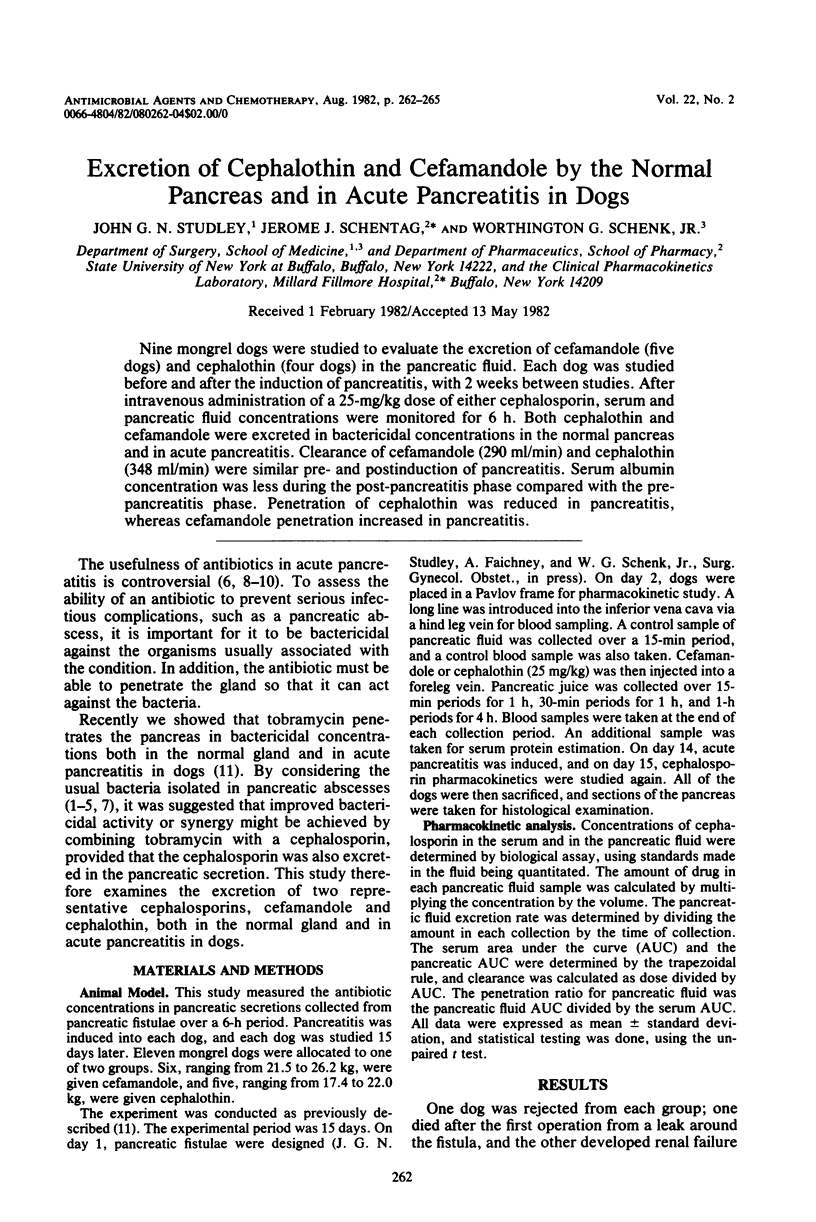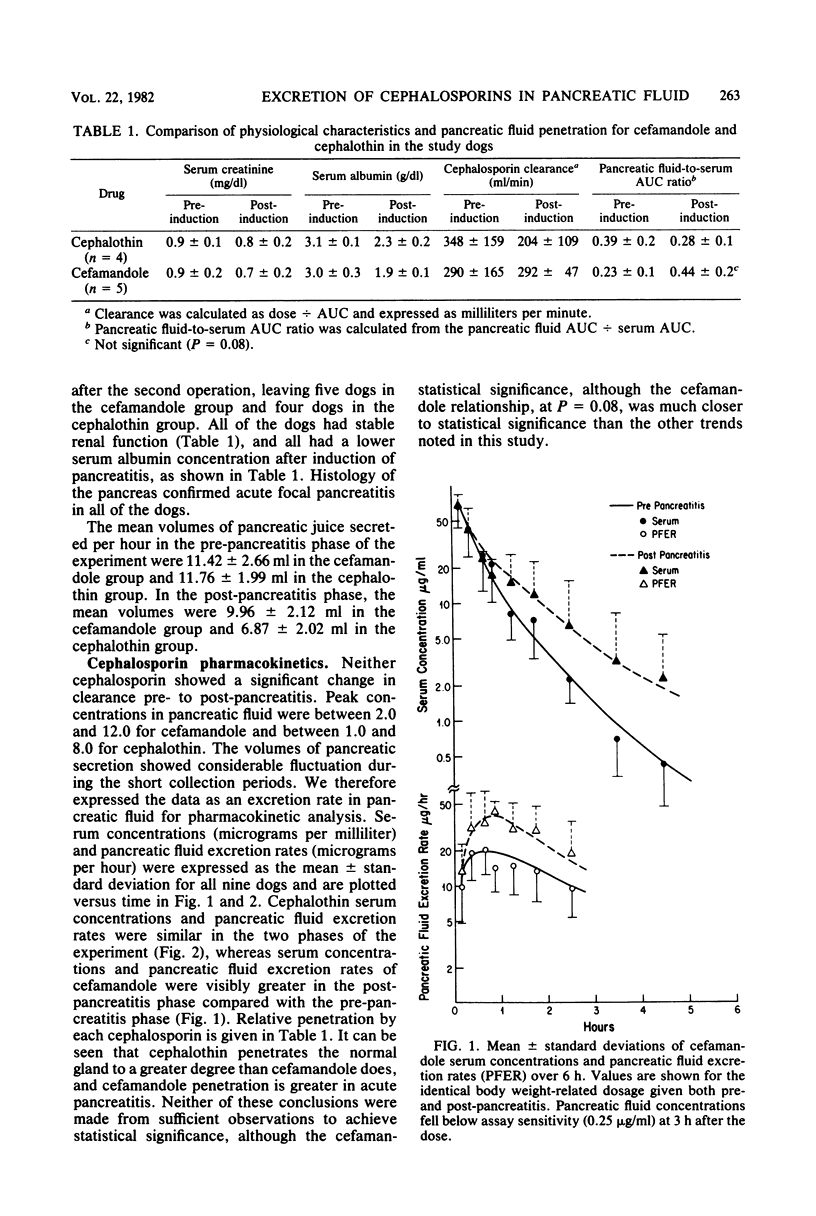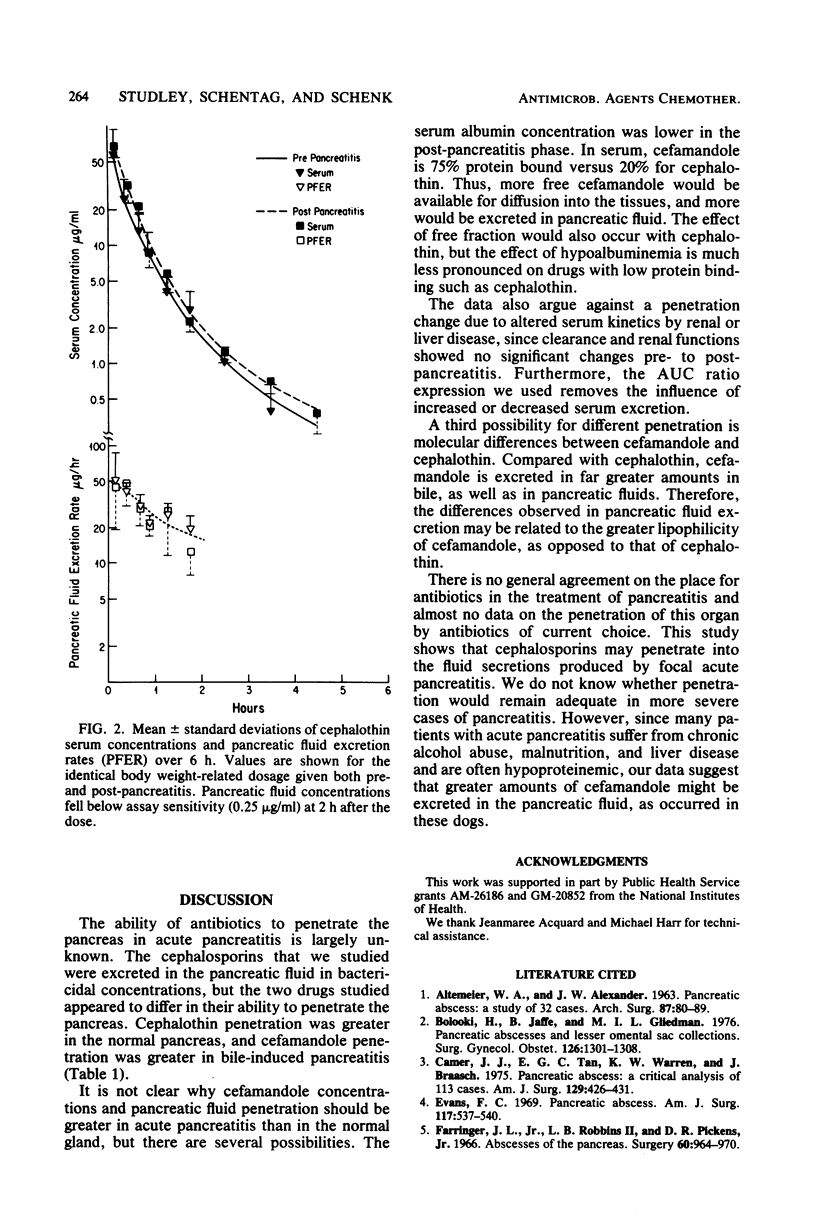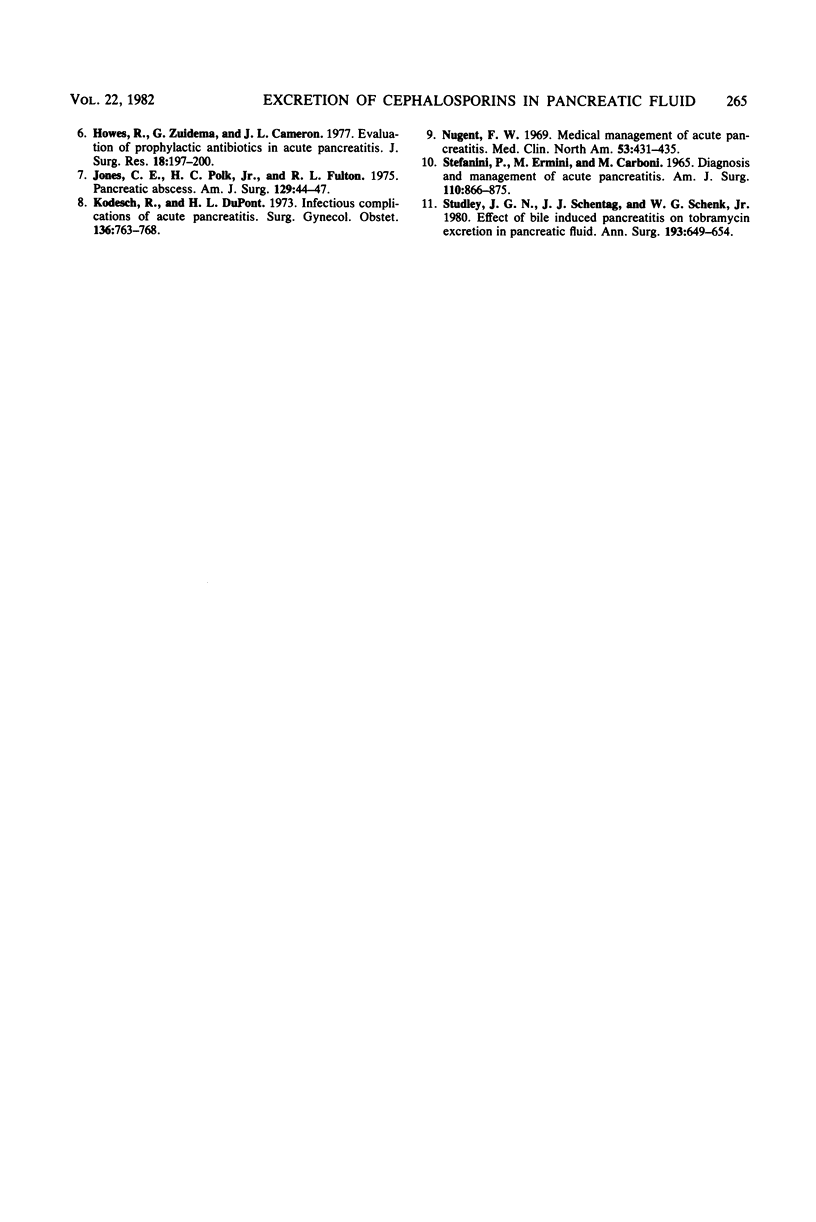Abstract
Nine mongrel dogs were studied to evaluate the excretion of cefamandole (five dogs) and cephalothin (four dogs) in the pancreatic fluid. Each dog was studied before and after the induction of pancreatitis, with 2 weeks between studies. After intravenous administration of a 25-mg/kg dose of either cephalosporin, serum and pancreatic fluid concentrations were monitored for 6 h. Both cephalothin and cefamandole were excreted in bactericidal concentrations in the normal pancreas and in acute pancreatitis. Clearance of cefamandole (290 ml/min) and cephalothin (348 ml/min) were similar pre- and postinduction of pancreatitis. Serum albumin concentration was less during the post-pancreatitis phase compared with the prepancreatitis phase. Penetration of cephalothin was reduced in pancreatitis, whereas cefamandole penetration increased in pancreatitis.
Full text
PDF



Selected References
These references are in PubMed. This may not be the complete list of references from this article.
- ALTEMEIER W. A., ALEXANDER J. W. Pancreatic abscess. A study of 32 cases. Arch Surg. 1963 Jul;87:80–89. doi: 10.1001/archsurg.1963.01310130082011. [DOI] [PubMed] [Google Scholar]
- Bolooki H., Jaffe B., Gliedman M. L. Pancreatic abscesses and lesser omental sac collections. Surg Gynecol Obstet. 1968 Jun;126(6):1301–1308. [PubMed] [Google Scholar]
- Camer S. J., Tan E. G., Warren K. W., Braasch J. W. Pancreatic abscess. A critical analysis of 113 cases. Am J Surg. 1975 Apr;129(4):426–431. doi: 10.1016/0002-9610(75)90188-9. [DOI] [PubMed] [Google Scholar]
- Evans F. C. Pancreatic abscess. Am J Surg. 1969 Apr;117(4):537–540. doi: 10.1016/0002-9610(69)90013-0. [DOI] [PubMed] [Google Scholar]
- Farringer J. L., Jr, Robbins L. B., 2nd, Pickens D. R., Jr Abscesses of the pancreas. Surgery. 1966 Nov;60(5):964–970. [PubMed] [Google Scholar]
- Howes R., Zuidema G. D., Cameron J. L. Evaluation of prophylactic antibiotics in acute pancreatitis. J Surg Res. 1975 Feb;18(2):197–200. doi: 10.1016/0022-4804(75)90016-5. [DOI] [PubMed] [Google Scholar]
- Jones C. E., Polk H. C., Jr, Fulton R. L. Pancreatic abscess. Am J Surg. 1975 Jan;129(1):44–47. doi: 10.1016/0002-9610(75)90165-8. [DOI] [PubMed] [Google Scholar]
- Kodesch R., DuPont H. L. Infectious complications of acute pancreatitis. Surg Gynecol Obstet. 1973 May;136(5):763–768. [PubMed] [Google Scholar]
- Nugent F. W. Medical management of acute pancreatitis. Med Clin North Am. 1969 Mar;53(2):431–435. [PubMed] [Google Scholar]
- Stefanini P., Ermini M., Carboni M. Diagnosis and management of acute pancreatitis. Am J Surg. 1965 Dec;110(6):866–875. doi: 10.1016/0002-9610(65)90171-6. [DOI] [PubMed] [Google Scholar]
- Studley J. G., Schentag J. J., Schenk W. G., Jr Effect of bile induced pancreatitis on tobramycin excretion in pancreatic fluid. Ann Surg. 1981 May;193(5):649–654. doi: 10.1097/00000658-198105000-00016. [DOI] [PMC free article] [PubMed] [Google Scholar]


